Health & Education
We all want the best care possible for our horses. The Heath & Education section covers both Learning Institutions, Organizations as well as many sources for equine assistance including Veterinarians and Farriers.
For those who want a to formally study horses, the Education section includes College Riding, Equine Studies, and Veterinary Schools. Learn about the wide variety of horses in the Horse Breeds section. Supplements and Treatments Therapy are also included in the section.
Everyone can learn from Fine Art and there are some specialty Museums that might surprise you.
Horses as a therapy partner enrich the lives of the disabled. These facilities are listed in our Therapeutic Riding section. To help children and young adults build confidence and grow emotionally, please see the resources available on the Youth Outreach page.
Looking for a place to keep your horse? You can find it in the Horse Boarding section. Traveling? Find a Shipping company or Horse Sitting service if your horse is staying home!
Want to stay up to date with the latest training clinics or professional conferences? Take a look at our Calendar of Events for Health & Education for the dates and locations of upcoming events.
Do we need to add more? Please use the useful feedback link and let us know!

by Eleanor M. Kellon, VMD
When an average size mare delivers, she will have produced a 100+ lb foal, an 11-pound placenta, and as much as 16 pounds of fluid. She has also greatly increased the size and thickness of her uterus, and blood volume increased about 30% during pregnancy. The raw materials to build these things didn't come from thin air.
Providing adequate calories is the easy part. Rapidly dividing cells also have critical needs for amino acids, vitamins and minerals that they must obtain from the placenta.
It's true that the dam will rob her own body tissues, if necessary, to provide for the fetus (not that this is a desirable management tactic!). It's also true that the dam cannot provide something she herself does not have. If she starts the pregnancy with low body reserves and her diet is not adequate, the foal will be short-changed, and the mare will become even more deficient.
Extreme deficiencies result in things like White Muscle Disease and goiter with hypothyroidism in foals. More insidious effects include a higher risk for developmental orthopedic disease like OCD and contractures. Chronic copper deficiency has been linked to uterine artery rupture in mares.
Advice on feeding pregnant mares used to pay no special attention to nutrition until the last trimester. The latest (2007) NRC recommendations begin to allow for increased nutrients in the 5th month, but since there are still gaps in the research, there are also gaps in their recommendations. For example, they don't allow for any increase in zinc or manganese, but obviously foals require those essential minerals in their bodies.
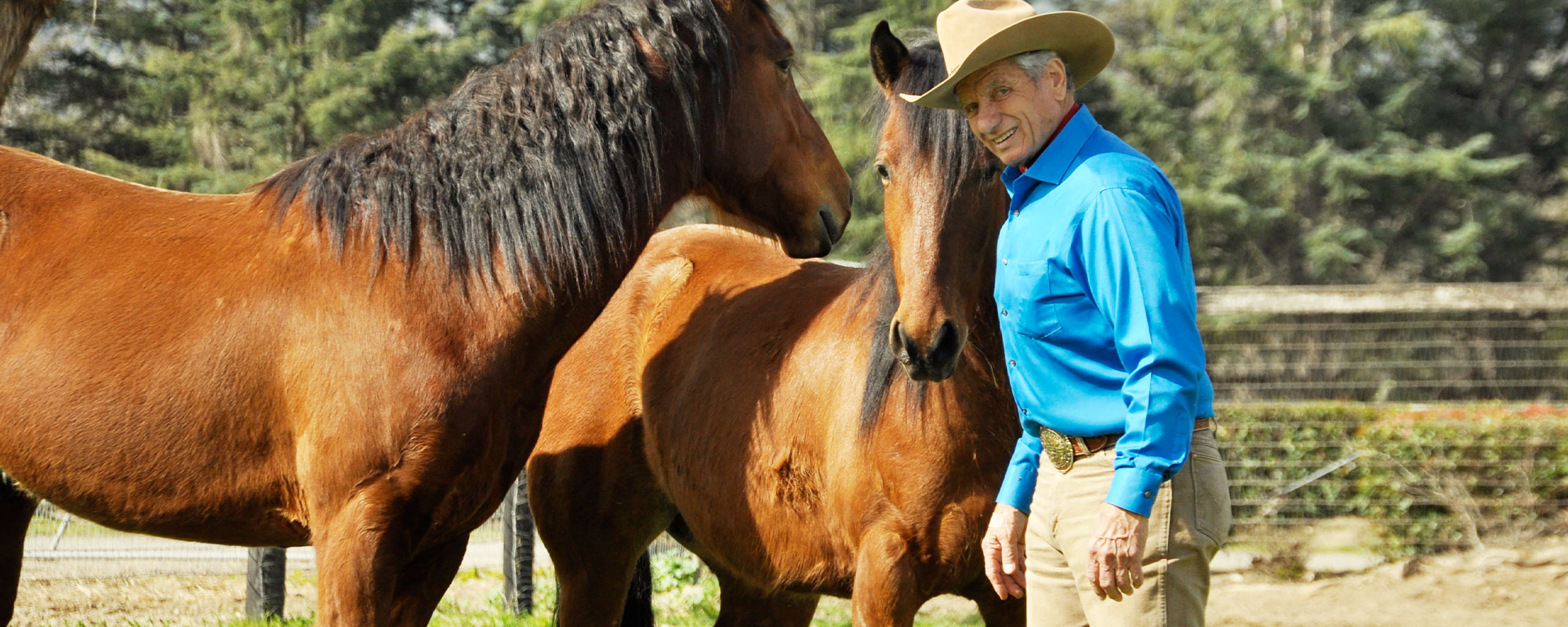
“I don’t want my students to be as good as me, I want them to be better than I am,” says Monty Roberts.
“I have dedicated my life to the study of horses and their interactions with humans, and after more than 80 years of working with horses I’m still learning! I often say to my students ‘My way is the only way for me today, but if you show me a better way, that will be my way tomorrow.’ My techniques have morphed in such a way so as to improve right up to this very day. And I encourage my students to do the same.”
For over 20 years Monty Roberts and his team of Certified Instructors have been working to spread his non-violent horsemanship techniques through his International Learning Center in California and his instructors’ programs in many countries around the world. “Our instructor base keeps growing and now includes Certified Instructors on all 6 populated continents, with [Monty Roberts] courses in over 30 countries,” said Debbie Loucks, Roberts’ daughter and Legacy Manager. “Our instructors are doing some amazing work all over the world, for horses, and people too.”
Read more: Monty Roberts: I Don’t Want My Students to Be As Good As Me

by Danvers Child CJF
Although farriers advertise their services and clients occasionally respond to those advertisements, the vast majority of farriers establish their business through referrals. It’s the way things work in the horse industry; another owner, a trainer, a veterinarian, or whoever passes along a recommendation, and you call the recommended farrier.
It’s a hit and miss selection process. The person who makes the recommendation awards some value to the farrier, but…. “Is that value truly warranted?” and “Does it apply to your situation?” The fact is that most farriers get recommended due to things disconnected or minimally connected to their craft.
Rather than being selected for their ability, their skill set, or their knowledge base, they’re more often chosen due to concerns related to being personable and friendly, being reasonably priced, being known for not losing shoes, or for showing up on time.
While these are all good and desirable traits, they’re probably not the best selection criteria for the performance side of the job at hand. So people tend to add “experience” to the list. Unfortunately, however, experience sometimes doesn’t match up to skill, knowledge, or talent. The fact is that 20 years of experience can sometimes mean one year’s worth of experience repeated 20 times.
So, keep looking for the good traits, but don’t automatically award credibility for them. And consider adding some other criteria to your selection process. Things you might look for would include:
1. Someone who pursues and/or attains certification.
While certification is not generally required in North America, many motivated farriers will have voluntarily submitted to testing through the American Farriers Association (AFA). Yes, there are many excellent farriers who have not chosen to certify; nevertheless, when “flying blind,” it’s a good idea to look for someone who has earned the AFA’s CF (Certified Farrier) or CJF (Certified Journeyman Farrier) credential.
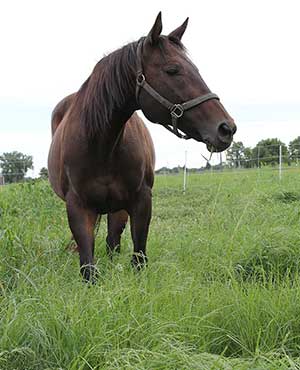
by Hay and Forage Grower
Horses, as grazers, are different than every other livestock species. Notoriously known for being selective, horses can quickly turn a uniform pasture into a patchwork quilt that often results in overgrazing in some areas and nonutilization in others. Their selection habits are often difficult to explain.
University of Minnesota extension horse specialist Krishona Martinson and her co-workers have invested significant time and resources in researching horse preferences for various classes of forage species. A recent summary of that work highlighted these findings:
Perennial cool-season grasses
• Horse preference is important to realize more uniform grazing of pastures, improved forage utilization, and a reduction in pasture maintenance (clipping or mowing).

by Eric Smiley
DNA is the unique genetic fingerprint that makes us who we are. From its use in solving murders to its importance in parent testing in humans and animals, it represents a giant leap forward in science. The way DNA has shaped history fascinates me.
If “you are who you are” and certain things cannot be changed due to your DNA, does that also mean “you do what you do” and that every outcome is predictable?
In certain people, yes.
As a coach, my job is to guide and educate. Do I make a lasting difference? This is a question I expect all teachers ask at the end of a tiring day! Sometimes the answer is unclear; sometimes it is obvious.
Often, I watch my pupils compete and wonder whether I am seeing tangible evidence of anything I have taught them or whether I am merely witnessing what would have happened anyway. This is not me doubting myself; it is me trying to be objective so that I can refine what I do.
I am fascinated by what and how much information the human and equine brains are able to retain. But there is a big difference between the two: one is evolving rapidly in today’s high-tech society, while the other has changed very little in thousands of years.
How is harmony to develop between horse and rider when one has aims and ambitions and the other is happy eating grass? Is it possible to predetermine how both will do on their educational journey?
Read more: 3 Ways to Learn to Ride Better - An Excerpt from Two Brains, One Aim
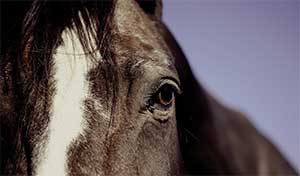
by Juliet M. Getty, Ph.D.
As if aging isn’t hard enough! Creaky joints, sagging backs, loose teeth, increased infections, poor digestion, and embarrassing gassiness -- just a few of the problems associated with getting older (for your horse, not you!).
But what was once a given in youth, now turns into a deficiency – vitamin C must now be added to the diet. You see, young horses are able to produce all the vitamin C they need for every-day health. This is why you typically do not see it added to commercially fortified horse feeds.
But as horses get up in years, they are less able to manufacture vitamin C. Decreased liver function is the main reason, but it can also be due to a decline in hindgut microflora and an increased propensity for pituitary dysfunction.
Why is vitamin C so important?
It prevents oxidative damage to your horse’s tissues and organs. In other words, it is an antioxidant. Antioxidants donate electrons to highly volatile, damaging molecules known as free radicals. Free radical production is accelerated during any type of physical or mental stress, muscle and joint inflammation, allergies, illness/injury, or exposure to toxins and pollutants.
But once free radicals receive their missing electron from vitamin C, they are neutralized – calmed down – and are no longer harmful.
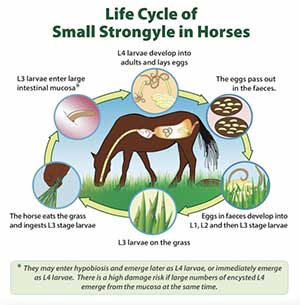
by Doug Thal DVM DABVP
Equine parasites are becoming resistant to our de-worming compounds. This blog post addresses why this is a HUGE CONCERN not only for your horse, but for the entire horse industry.
Recently I had to euthanize a world-class 4-year-old Quarter Horse mare, a real tragedy. She had badly damaged intestines, and after 2 colic operations, we decided to put her down. Her problems were partly brought on by a severe infestation of large roundworms (Ascarids). This type of parasite is common in young horses but VERY rare in adults. My first thought when I saw all the large adult parasites at surgery was “Why isn’t this mare being de-wormed?” When I asked the trainer about her parasite control program though, she said she had been wormed every 5 weeks!
While this mare probably had a very rare “immune tolerance” to these parasites, what was most alarming was that the parasites were able to survive in the face of repeated dousing in de-worming chemicals. These worms were resistant to the de-wormers being used!

by Becky James, BSc, MSc
Despite a long-standing belief that laminitis is a spring-time disease, a recent study identified that there is no ‘safe’ season: laminitis remains a threat regardless of the time of year. The same study (1) also revealed that 1 in 10 horses/ponies develop laminitis every year.
When to Worry?
As horse owners, we must remain cautious and not reduce preventive measures when the perceived spring ‘high-risk’ period is over. Furthermore, the study highlights the importance of recognizing subtle signs of potentially life-threatening episodes.
This is supported by 2017 study published in the BEVA Equine Veterinary Journal (2) which revealed 45% of owners did not suspect laminitis was the problem prior to veterinary diagnosis, making it critical to recognize the more subtle signs.
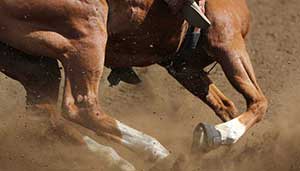
by Dr. Eleanor Kellon
Tendons and ligaments play critical roles in the musculoskeletal system. Feed them well and treat them kindly.
Tendons and ligaments are specialized forms of connective tissue. Tendons connect muscle to bone. Ligaments are anchored on bone at both ends. Both are composed of interwoven strands of type I collagen protein in a structure much like a rope. They are built to resist stretch, but both structures do stretch.
Tendons facilitate movement by pulling on bones when a muscle contracts. Stretching that occurs (e.g. when the fetlock drops during weight bearing) has an effect similar to pulling on a rubber band. When the stretch is released, the tendon snaps back to its original length, and this assists the pull of the muscle.
Ligaments are meant to restrict movement. They are able to dissipate their stress because they contain strands of elastin, a protein which can deform then resume its original shape.
Overstretching can damage any tendon or ligament. Fatigue and working in deep footing are further risk factors, as are toe grabs or overly long toes and shoes with bars or heel extensions that delay breakover. Age and PPID (Cushing's disease) also weaken these structures.
- Feeding Flaxseeds: Do you have all the facts?
- 5 Red Flags You Should Not Ignore When Horse Shopping (And How to Address Them)
- The Secret to Healthy Horses? Keep it Simple!
- Horse Health: Equine Influenza and How to Minimize Your Risk
- Managing Horses in Hot Weather
- Ketogenic Diet for Horses? Pass
- The Right Way to Dose Electrolytes
- Muzzle Adjustments May Prevent Teeth Damage
- 12 Stretches to Release Lower Back and Hip Pain In Riders
- Horse Health: You Can Lead a Horse to Water…
- Is it Time to Change Bits?
- Maintain Your Horse’s Safety This Fourth of July
- Health and Exercise Science student research quantifies horse gait, movement for equine therapy
- 10 Facts About Equine West Nile Virus
- Tracking Five Millennia of Horse Management with Extensive Ancient Genome Time Series (Part 4 of 4)
- Tracking Five Millennia of Horse Management with Extensive Ancient Genome Time Series (Part 3 of 4)
- With Wet Weather Comes A New Hoof Problem: Retracted Soles
- Tracking Five Millennia of Horse Management with Extensive Ancient Genome Time Series (Part 2 of 4)
- Tracking Five Millennia of Horse Management with Extensive Ancient Genome Time Series (Part 1 of 4)
- Breeding: Make Sure You Cover the Basics!












































